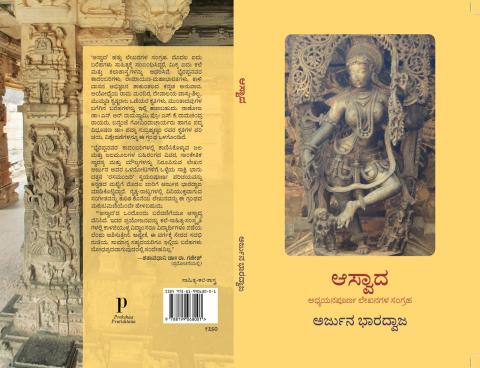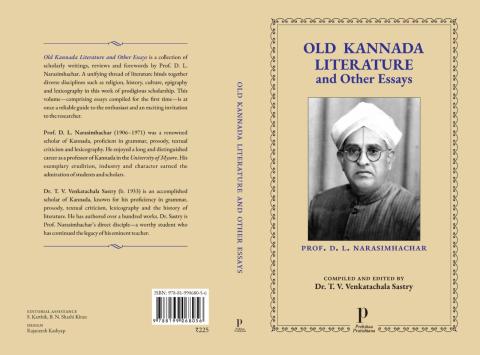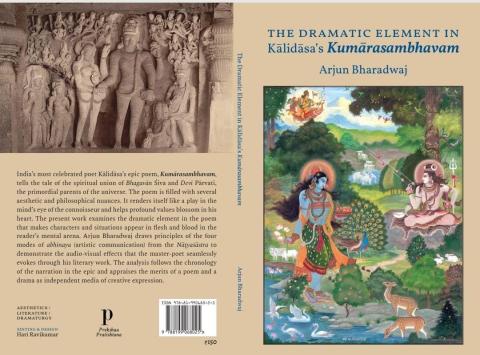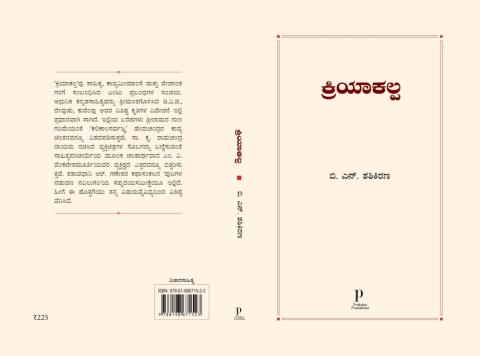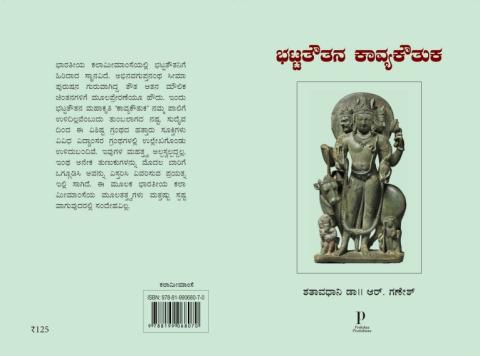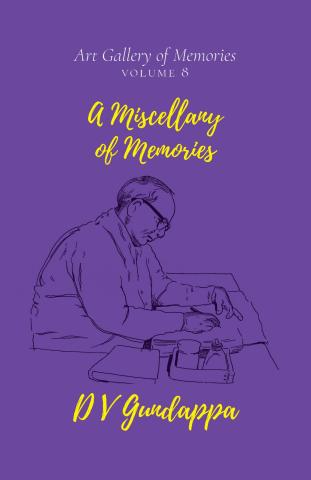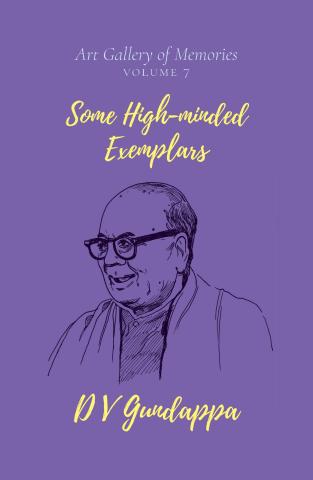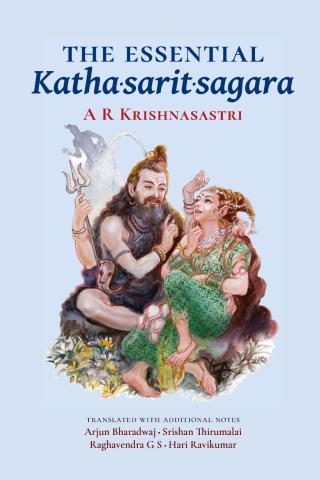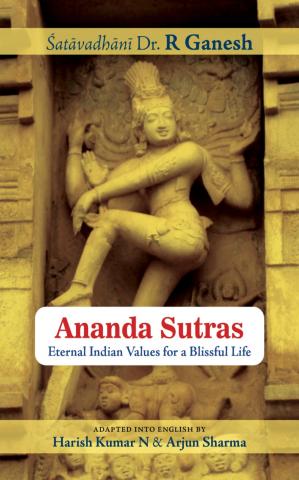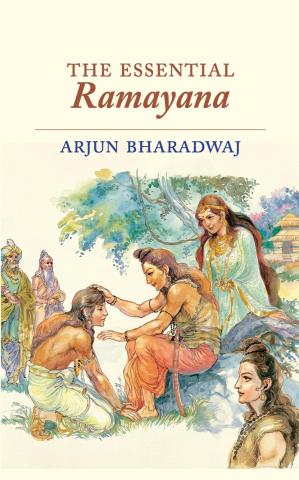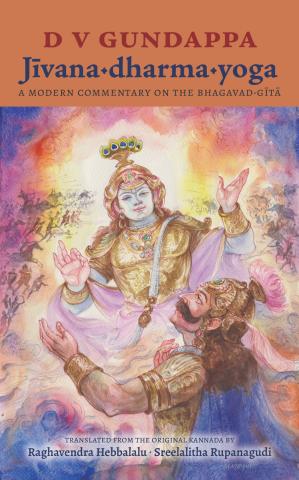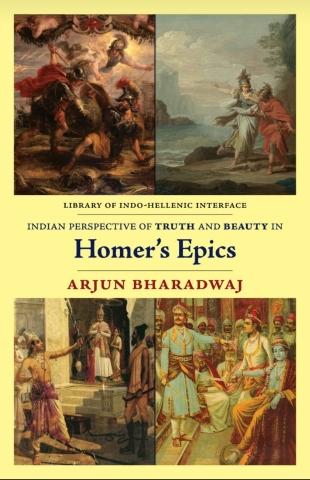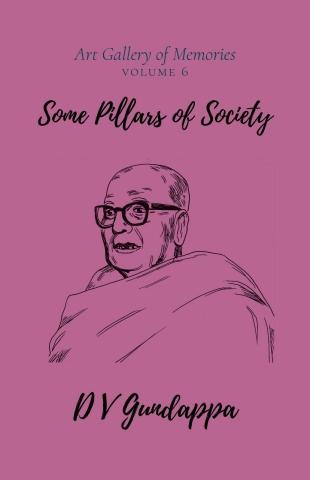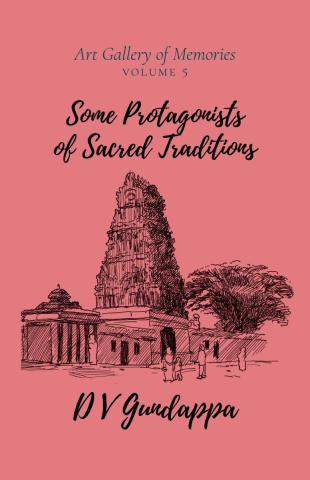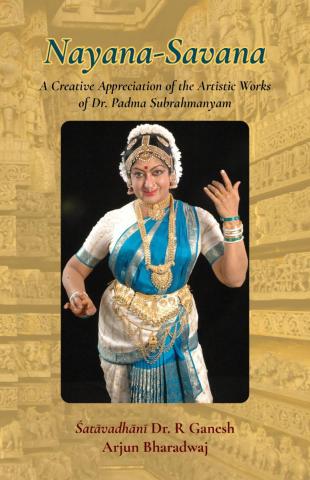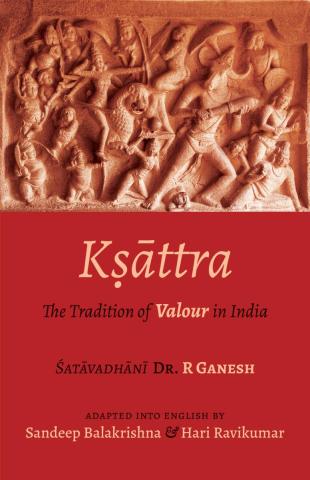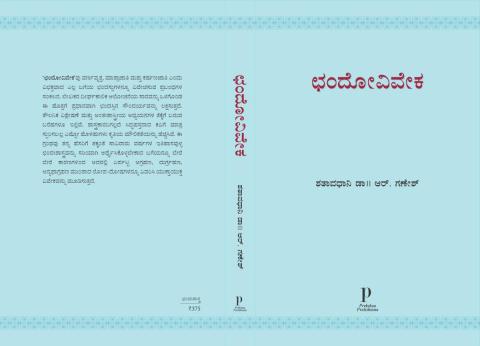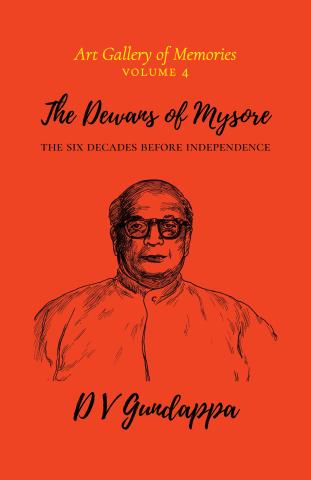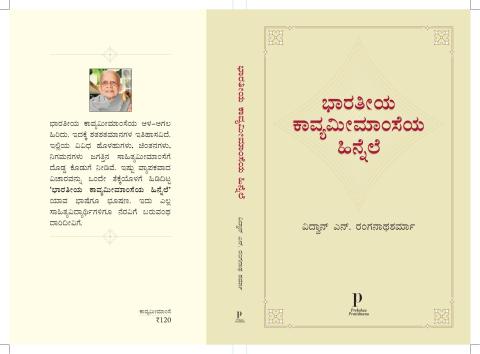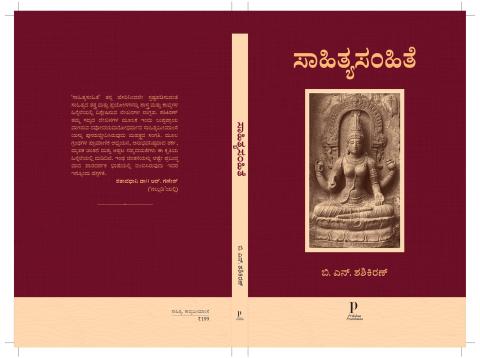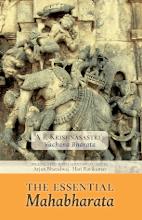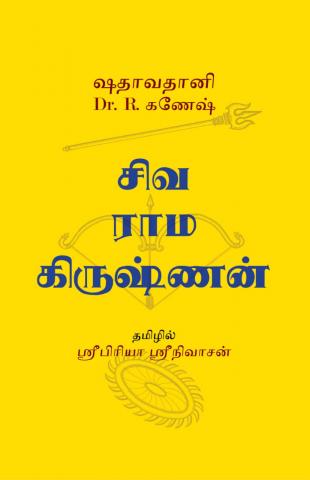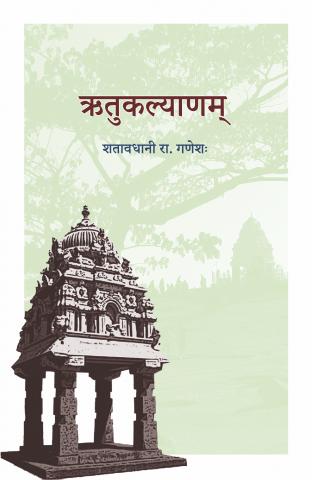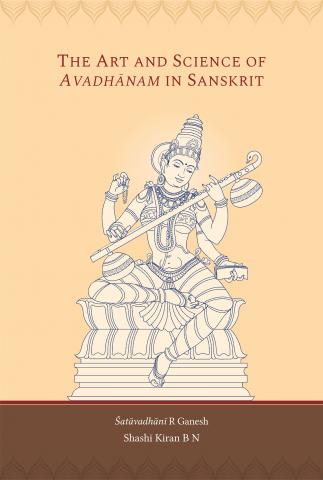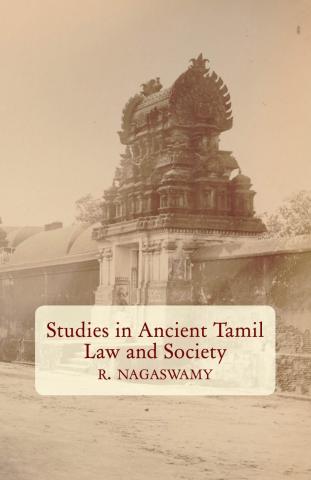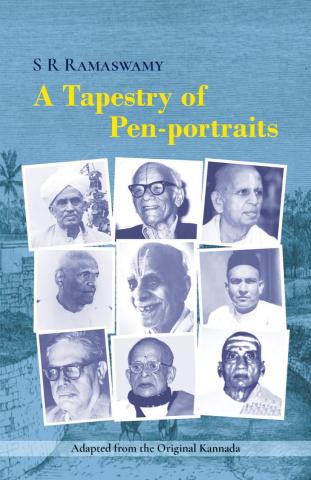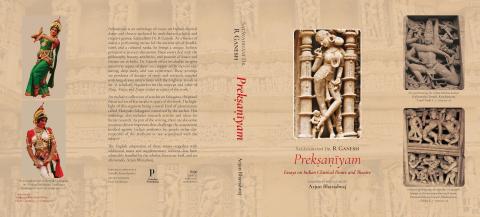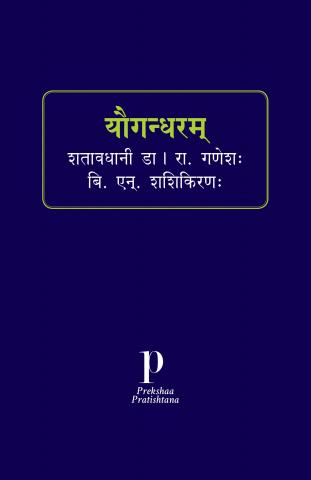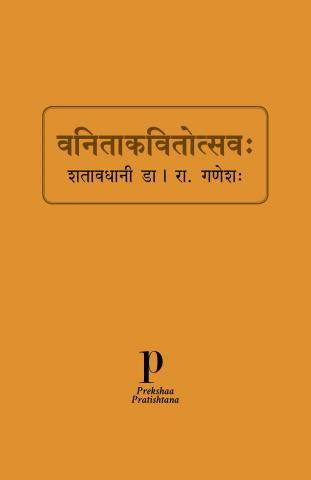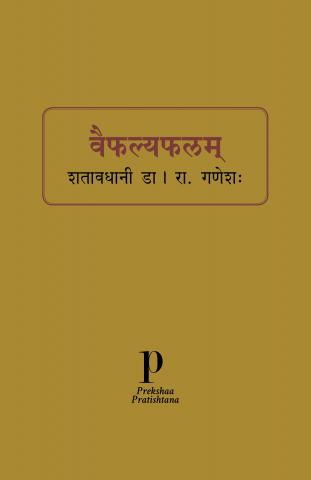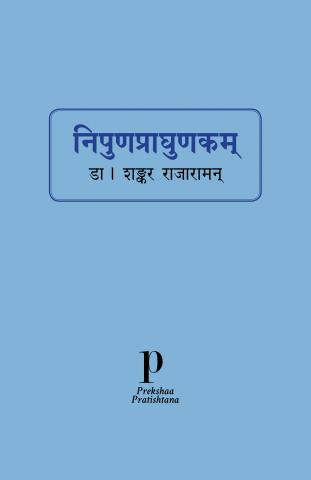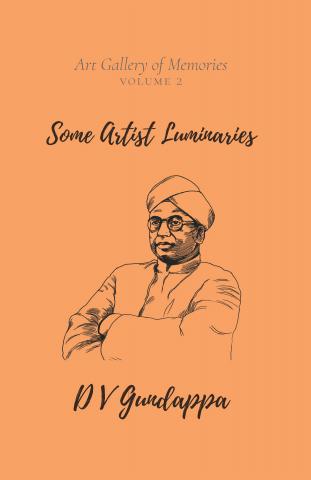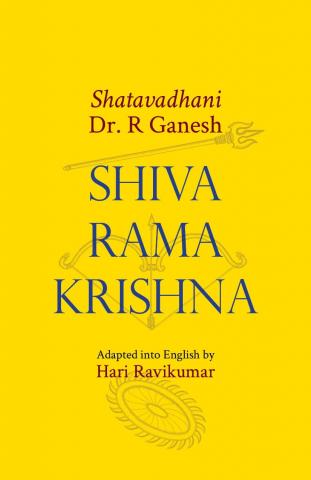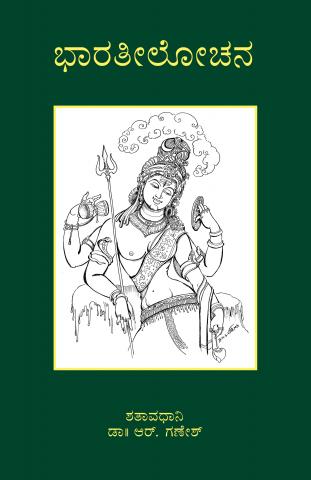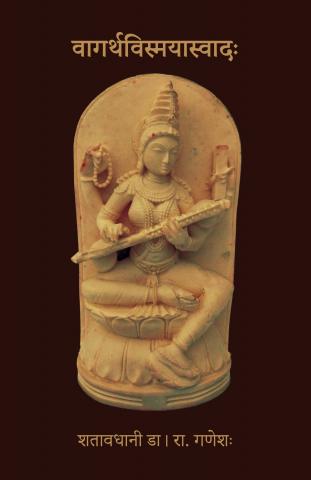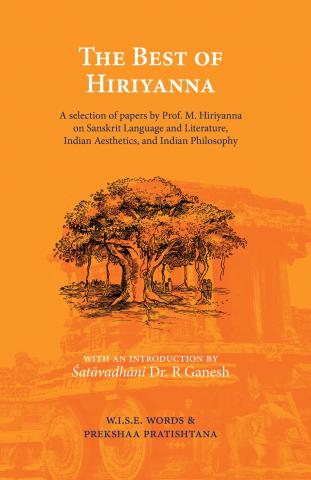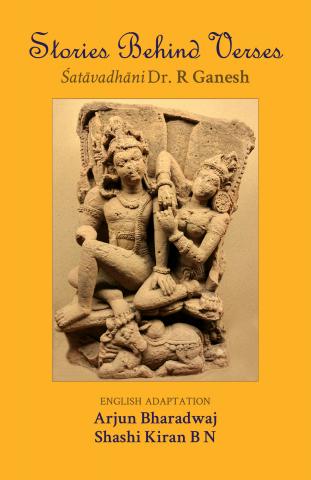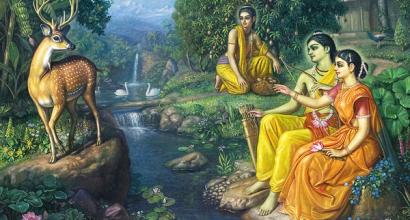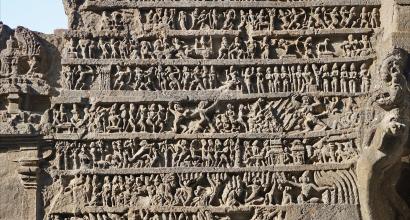Uttara-kāṇḍa of the Rāmāyaṇa does not mention anything about the battle involving Lava and Kuśa; the Pātāla-khaṇḍa (adhyāyas 1-68) of the Padma-purāṇa speaks about the yajñāśva roaming around different lands. Moreover, as per the version that we come across in the purāṇa, Rāma and Sītā reunite and live happily ever after; thus, the story ends on a positive note, just like the play Uttara-rāma-carita. However, we cannot jump to the conclusion that Bhavabhūti has borrowed the plot for his play from the Padma-purāṇa, because there are quite a number of differences between the story of the play and that seen in the purāṇa. As per the Padma-purāṇa, Bharata’s son Puṣkala[1] follows the yajñāśva to protect it, and not Candraketu.[2] Śatrughna, Lakṣmīnidhi, Hanūmanta, Sugrīva, and others accompany him as well. Lava and Kuśa are sixteen years old, and not twelve. Vālmīki had taught them archery as well. Kuśa returns from Mahākālapura and not from Bharata muni’s āśrama. Rāma does not appear on the battlefield to fight his children; he gets acquainted with them only in Ayodhyā.
It is hard to say what versions of Rāmāyaṇa existed in the times of Bhavabhūti in the region where he lived; we cannot estimate what source inspired him in what way. However, just like in his other play, the Mahāvīracarita, it is likely that he has had the epic as the basis and has exercised a lot of creative liberty just as Bhāsa does in his plays. From this perspective, we will have to admit that, except for some of the main characters and inspiration for the storyline from the original epic, the rest of the Uttara-rāma-carita is a creation of the poet. The story is old, but the artistry is novel. The first act portrays the events associated with sītā-parityāga, i.e., the giving up of Sītā; however, the manner in which it occurs is completely a product of the poet’s imagination; the palace was devoid of all elders; if they were to be present, they would have possibly averted this act – so seems to be the poet’s perspective. Lokārādhana, i.e., caring for the world, is a vrata for the king; in order to please his people, Daśaratha exiled Rāma and gave up his life (1.41). Rāma, who ascended the throne many years later, was still in his youth; suspicions about his wife’s character and accusations about his kingship were spreading like poison all around (1.40) – can it be ignored?[3] In fact, Sage Vasiṣṭha had instructed him, “Pay attention to people’s welfare; in glory and good fame lies all your wealth!” (1.11). In reply, Rāma had declared –
स्नेहं दयां च सौख्यं च यदि वा जानकीमपि।
आराधनाय लोकस्य मुञ्चतो नास्ति मे व्यथा॥ (1.1)
He had great respect and concern for his people; when Durmukha calls the citizens durjana, i.e., ignoble, Rāma reprimands him for doing so. “My people have always had immense faith in the Ikṣvāku-vaṃsa; however, quite unfortunately, the royal family has now become an object of criticism for the people; how will people believe the incident of Sītā’s agni-praveśa, which, though awe-inspiring, took place in a far-off place?” (1.44) Rāma consoles him by saying so.
Just because the people are suspicious, can Rāma dispose away Sītā like a rotten fruit? She was in the last stages of her pregnancy; his beloved wife; she had stayed with him in the forest of her own accord; she was captured by the rākṣasas and spent the year in captivity constantly thinking of her loving husband; she had currently grown tired looking at the paintings which depicted scenes from their own lives, was resting on his chest, with her head on his arms.[4] Looking at her, he feels happy telling himself, “She is the Lakṣmī of my house; … it is impossible to bear the pain of separation from her!” Even as he thinks this way, Durmukha brings him the report, which strikes him like a lightning bolt. Rāma faints; not knowing what to do, he wonders, what can an ill-fated person like me do, after all? He is now in a fix – a dharma-saṅkaṭa, an ethical dilemma of sorts; a conflict between the dharma as a husband and dharma as a king. If he holds on to his pati-dharma, he would have to compromise upon the rāja-dharma; if he performs his rāja-dharma, his dharma as a husband will be at stake. He only takes a moment to arrive at a decision; he quickly recalls his duty as a king, the reputation that his family has gained, and the instructions of his gurus. He declares right there – “My act is akin to deceptively giving away a pet bird, an innocent one, reared at home with all love, to Death like a butcher!” (1.45). He decides to send her away to the forest. But then, he did not conclude that he is being dhārmic by doing so; he thinks, I am a fallen person now – no one can even touch me; if I touch this devī (Sītā), I will be polluting her as well! He then lets her sleep away from him. He reprimands himself by calling names – apūrva-karma-caṇḍāla, durātmā, nirghṛṇa, etc. Thus, his rāja-dharma took the upper hand, but his pati-dharma was not amiss; his love for Sītā never waned. As though she was already experiencing what was about to happen, Sītā speaks in her sleep – “Ha, ārya-putra! Where are you?” However, ironically, her own desire would be used as the pretext for her exile.
The story of slaying Śambūka in Janasthāna is popular in the Uttara-kāṇḍa of the Rāmāyaṇa; however, the characters of Ātreyī and Vāsantī are newly introduced by Bhavabhūti. Ātreyī brings to mind the brahmacārī, who we encounter in the Svapnavāsavadatta. Using these subsidiary characters in the backdrop of Janasthāna, Bhavabhūti has described the kind of relationship Rāma and Sītā would have shared twelve years ago. (The karuṇa- and vipralambha-śṛṅgāra segments that occur here and the invisible Sītā remind us of Svapnavāsavadatta again!). Rāma is the same old dhārmic and compassionate human who we know from the Rāmāyaṇa; Sītā is filled with love and is an embodiment of patience. Bhū-devī, who is also called kṣamā (forbearance) was also impatient with Rāma; but Sītā was always patient with her husband; she laments with Rāma and brings him back to consciousness again and again.
The role played by Sage Viśvāmitra’s āśrama in the Mahāvīracarita is played by Maharṣi Vālmīki’s āśrama in the Uttara-rāma-carita; all the events and characters are centred around the āśrama; the elders of the family and the gurus get together there; the younger ones fight a battle against each other in the vicinity of the āśrama. Sītā and Rāma reunite there; Rāma also meets his children there – all such unions and reunions are just by coincidence; they are not planned or foreseen. This also brings to our minds the reunions that happen in Maharṣi Marīci’s āśrama in the Śākuntalam. In the current case, it is not just the father who feels happy meeting the future of his lineage, but the grandparents, too, are thrilled upon uniting with their grandchildren (Act 4). Lava is sarva-damana just like Bharata; and his older brother, Kuśa, even surpasses him. The poet has also included a garbhāṅka – a play within a play; the Priyadarśikā of Harśavardhana and Shakespeare’s Hamlet embody this feature as well. By bringing them all together to watch the play, the poet has brought to light the impeccable character of Sītā and the agony that Rāma underwent being separated from her; Bhavabhūti’s Vālmīki, thus, successfully reunites them. Aho! Saṃvidhānakam! (Act 3).
To be continued ...
The current series of articles is an enlarged adaption of Prof. A. R. Krishnasastri's Kannada treatise Saṃskṛta-nāṭaka. They are presented along with additional information and footnotes by Arjun Bharadwaj.
[1] As per the Uttara-rāma-carita, Lakṣmaṇa follows the horse for its protection.
[2] Refer the Rāmāśvamedha authored by Muddaṇa; it bears semblance to the Jaimini-bhārata in the description of the movement of the yajñāśva and the battle between the sons and the father that follows. It is hard to say what derived inspiration from where.
[3] This, in fact, was not the angry utterance of a washerman alone, as popular in many narratives; the entire populace was concerned about the purity of Sītā’s character.
[4] The portrayal of such love and affection in the first act of Uttara-rāma-carita, brings to mind the first act of the Pratimā-nāṭaka.




